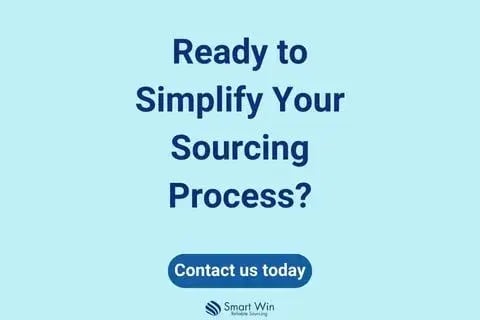[Cost Breakdown] Understanding the True Cost of Importing from China
Cost of importing from China? Learn about hidden fees, shipping, duties, and strategies to reduce your total cost for a smarter import process.
12/4/20247 min read
![[Cost Breakdown] Understanding the True Cost of Importing from China](https://assets.zyrosite.com/cdn-cgi/image/format=auto,w=812,h=392,fit=crop/YNqro9jB1VIg6bzd/734-YBgr0x68jbTG6VKD.webp)
![[Cost Breakdown] Understanding the True Cost of Importing from China](https://assets.zyrosite.com/cdn-cgi/image/format=auto,w=328,h=320,fit=crop/YNqro9jB1VIg6bzd/734-YBgr0x68jbTG6VKD.webp)
Importing products from China can be a lucrative business strategy, but to succeed, it’s essential to understand the true costs involved. Hidden fees, fluctuating taxes, and logistics challenges can add unexpected expenses to your budget, impacting your profit margins. In this article, we’ll break down the costs, provide practical tips, and help you make informed decisions to ensure your sourcing journey is efficient and cost-effective.
Table of Contents
Introduction
The Main Components of Importing Costs
Understanding Import Duties and Taxes
Breaking Down Shipping Costs
The Role of Freight Forwarding in Importing
Identifying Hidden Costs in the Process
The Importance of Total Landed Cost
Budgeting for Unexpected Costs
Tips for Reducing Overall Importing Costs
Conclusion
Introduction to Importing Costs
When importing from China, it’s not just about finding the best supplier pricing; it’s about understanding the comprehensive expenses involved. A transparent view of these costs can help you strategize effectively, whether you’re a small business owner or managing large-scale operations.
Why Understanding Costs Matters
According to a report by the International Trade Administration, importers often overlook up to 15% of their total costs due to hidden fees. Such surprises can disrupt cash flow and profitability. By dissecting these costs, you can set realistic budgets and price your products competitively.
The Main Components of Importing Costs
1. Direct Costs
Product Cost: The price quoted by your supplier. This cost varies depending on product type, materials, and order quantity.
Shipping Costs: These include the charges for transporting goods from China to your destination, which we’ll explore in detail below.
2. Indirect Costs
Import Duties and Taxes: Tariffs applied by your country’s customs authority. These depend on the product’s tariff classification.
Insurance: Protecting your shipment against damage or loss is an added cost but a necessary safeguard.
3. Miscellaneous Fees
Handling Fees: Charges for loading, unloading, and processing goods at ports.
Storage Costs: Fees incurred if shipments are held at a port for longer than expected.
Understanding Import Duties and Taxes
Import duties and taxes are one of the most significant costs you’ll encounter, but they’re also among the most confusing. Let’s break it down:
How Import Duties Work
Every product falls under a specific Harmonized System (HS) Code, which determines its tariff rate. For example, electronic items may attract lower tariffs than luxury goods. It’s crucial to know the correct HS Code to avoid overpaying.
Calculating Taxes
Most countries apply Value Added Tax (VAT) or sales tax to imports. For instance, the EU imposes VAT rates between 17% and 27% depending on the destination country.
💡 Tip: Use an online duty calculator.
Breaking Down Shipping Costs
Shipping is another significant factor in your total landed cost. Understanding the variables affecting shipping expenses can help you choose the best options.
Key Factors Affecting Shipping Costs
Weight and Dimensions: Heavier and bulkier shipments cost more to transport.
Distance and Destination: The farther your goods need to travel, the higher the cost.
Shipping Method: Air freight is faster but more expensive than sea freight, which is ideal for large shipments.
Additional Shipping Charges
Be prepared for charges like:
Fuel Surcharges: Adjusted regularly based on global fuel prices.
Port Fees: Paid to ports for loading or unloading cargo.
The Role of Freight Forwarding in Importing
Freight forwarding is a crucial service that simplifies the logistics of importing goods from China. While it adds to your overall expenses, it can save you time, prevent errors, and ensure smoother delivery of your goods.
What Does a Freight Forwarder Do?
Freight forwarders act as intermediaries between you and various transportation services, handling:
Customs Clearance: Navigating import regulations and completing the necessary paperwork.
Shipping Coordination: Selecting the most cost-effective routes and carriers.
Cargo Insurance: Protecting your shipment against potential risks.
Freight Forwarding Costs
These costs vary based on:
Service Scope: Full-service forwarders charge more but handle every aspect, from pickup to delivery.
Shipping Mode: Air freight forwarding is typically more expensive than sea freight.
Volume of Goods: Larger shipments often benefit from economies of scale.
Identifying Hidden Costs in the Importing Process
Hidden costs are often the Achilles’ heel of importing, catching businesses off-guard and eating into profit margins. Identifying these costs upfront is key to effective cost management.
Common Hidden Fees to Watch For
Inspection Fees: Customs authorities may charge for inspecting goods.
Demurrage Charges: If your shipment remains at a port longer than the free storage period, fees apply.
Currency Conversion Costs: Payments in foreign currencies may incur unfavorable exchange rates and bank fees.
How to Avoid Hidden Costs
Request Detailed Quotes: Ensure your supplier provides a breakdown of all costs, including potential add-ons.
Partner with Experts: Companies like Smart Win can help you navigate and minimize unexpected expenses.
The Importance of Total Landed Cost
The total landed cost (TLC) represents the complete expense of getting goods from the supplier to your door. Understanding this figure is crucial for setting profitable pricing strategies.
What Is Included in Total Landed Cost?
Product Costs: Price quoted by the supplier.
Shipping Costs: Freight charges, insurance, and fuel surcharges.
Customs Fees: Duties, taxes, and brokerage fees.
Local Delivery Costs: Transportation from the port to your final destination.
Why Total Landed Cost Matters
Knowing your TLC allows you to:
Avoid Underpricing: Set prices that cover all expenses and leave room for profit.
Plan Budgets Accurately: Understand the true cost of your goods to forecast expenses effectively.
Budgeting for Unexpected Costs
Even with meticulous planning, unexpected expenses can arise. A robust contingency plan ensures you’re prepared for surprises without jeopardizing cash flow.
Why Budgeting for Contingencies Is Critical
According to a survey by the International Chamber of Commerce, unforeseen costs can account for 5–10% of total import expenses. Examples include sudden tariff changes, shipment delays, or supplier errors.
How to Create a Contingency Plan
Set Aside a Buffer: Allocate 10–15% of your total budget for unexpected costs.
Diversify Suppliers: Having multiple reliable suppliers reduces dependency and mitigates risks.
Analyze Historical Data: Review past imports to identify trends and potential pitfalls.
Reducing Overall Importing Costs
Understanding the true costs of importing is only the first step; the next challenge is finding ways to reduce those costs. With the right strategies, you can cut expenses without sacrificing quality or efficiency. Here are some practical approaches to help lower your overall importing costs.
1. Bulk Purchasing for Better Pricing
One of the most effective ways to reduce costs is by purchasing in bulk. By negotiating larger orders, you can secure a lower price per unit from suppliers. This works particularly well for items with steady demand or those that can be stored for a longer period.
How Bulk Purchasing Saves Money
Lower Unit Costs: Suppliers typically offer discounts for large orders, resulting in a better deal per unit.
Reduced Shipping Costs: Shipping larger volumes at once can be more cost-effective than smaller shipments, especially when using sea freight.
Economies of Scale: Bulk buying can also lower packaging and handling fees.
Before committing to bulk purchases, ensure you have enough storage space and are confident about the product’s demand in your market.
2. Negotiating Better Terms with Suppliers
Effective negotiation is an essential skill when importing from China. A few well-negotiated terms can significantly reduce your costs.
Key Negotiation Points
Payment Terms: Negotiate favorable payment terms, such as 30-60 days credit, which can free up your cash flow and reduce the need for working capital.
Lower Product Prices: If you’re ordering large quantities or establishing a long-term relationship, request price reductions.
Shipping Discounts: Many suppliers can provide discounted shipping rates if you’re willing to ship larger volumes.
Building strong relationships with your suppliers can also help you negotiate better deals in the future. For example, Smart Win works closely with trusted suppliers to help you secure favorable pricing and terms.
3. Using Technology for Cost Management
Technology can play a significant role in managing and reducing your import costs. From tracking shipments to optimizing order volumes, tech solutions provide transparency and help streamline the importing process.
Tech Tools to Help Reduce Costs
Supply Chain Management Software: These tools help track shipments, monitor inventory, and forecast demand more accurately.
Customs Management Software: Automates tariff classification and calculates taxes, reducing errors that can lead to additional costs.
Freight Comparison Platforms: These platforms allow you to compare different shipping options in real-time to choose the most cost-effective solution.
Adopting technology can save you time and money in the long run by minimizing human error and streamlining your processes.
Choosing the Right Payment Methods
Your choice of payment methods can also affect the overall cost of importing goods from China. Certain payment methods may be more secure, while others could lead to higher fees or unfavorable exchange rates.
Best Payment Methods for Importers
Wire Transfer: A popular and secure method for large payments. While it’s reliable, wire transfers can be expensive due to international bank fees.
PayPal: Although convenient, PayPal charges higher fees and offers limited recourse if disputes arise.
Letter of Credit (L/C): This is often the safest option for high-value transactions, as it guarantees payment to the supplier once certain conditions are met.
Final Thoughts on Importing from China
Understanding the true cost of importing from China is essential for making informed decisions that impact your bottom line. By carefully evaluating every aspect of the process—from shipping and customs to hidden fees and payment methods—you can develop strategies to reduce your overall importing costs and increase profitability.
Key Takeaways
Breakdown Costs: Be sure to understand all direct and indirect costs, including hidden fees and duties, to avoid unexpected surprises.
Plan for the Unexpected: Set aside a contingency fund for unexpected expenses and use historical data to anticipate potential risks.
Use Technology: Leverage technology for tracking, forecasting, and cost management to streamline the importing process.
Negotiate Smart: Don’t hesitate to negotiate better terms with suppliers, especially when ordering in bulk or building long-term relationships.
By partnering with an experienced sourcing agent like Smart Win, you gain access to expert advice, cost-effective shipping options, and transparent pricing that will ensure a more profitable and efficient importing experience.
Get in touch
Our Address
No.202 Huanshi West Rd, Yuexiu District Guangzhou, China
Contact Us
Working hours
Monday - Saturday
9:00 - 18:00
( Beijing Standard Time )
Smart Win Services


Company




